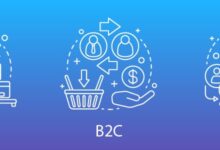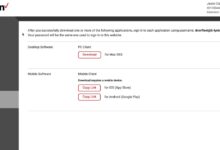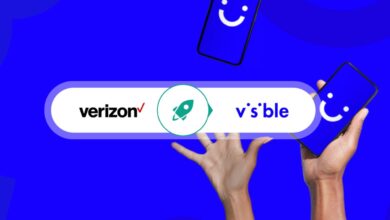B2B Mastery: 7 Powerful Strategies to Skyrocket Your Business Growth
Ever wonder how companies sell to other companies? Welcome to the world of B2B—where relationships, strategy, and long-term value rule the game. Let’s dive into what makes B2B thrive in today’s digital era.
What Exactly Is B2B? Breaking Down the Basics

The term B2B, or Business-to-Business, refers to transactions between two companies rather than between a company and individual consumers (which is B2C). This model powers industries from manufacturing to software, forming the backbone of global commerce.
Defining B2B in Modern Commerce
B2B involves one business providing products or services to another business. For example, a cloud software provider selling CRM tools to a sales agency, or a steel manufacturer supplying materials to an automotive plant. These transactions are typically larger in scale, more complex, and involve longer decision-making cycles than B2C.
- B2B focuses on solving business problems, not just fulfilling consumer desires.
- Transactions are often contract-based and recurring.
- Multiple stakeholders are usually involved in purchasing decisions.
B2B vs. B2C: Key Differences You Need to Know
While both models involve selling, the approach, messaging, and customer journey differ significantly. In B2C, emotional appeal and instant gratification drive sales. In B2B, logic, ROI, and long-term value take center stage.
- Decision-makers: B2B involves committees; B2C is often individual.
- Sales cycle: B2B can last months; B2C is usually minutes or hours.
- Pricing: B2B is often negotiated; B2C is fixed.
“B2B is not just about selling—it’s about solving. The best B2B companies act as strategic partners, not just vendors.” — Forbes
The Evolution of B2B: From Fax Machines to Digital Marketplaces
B2B has undergone a radical transformation over the past few decades. What once relied on phone calls, trade shows, and paper catalogs now thrives on digital platforms, data analytics, and AI-driven personalization.
Historical Overview of B2B Transactions
In the 20th century, B2B commerce was largely relationship-driven. Sales reps built trust through face-to-face meetings, and procurement was a manual process. The introduction of ERP systems in the 1990s began streamlining operations, but digital transformation didn’t truly accelerate until the 2000s.
- 1980s–1990s: Rise of EDI (Electronic Data Interchange) for order processing.
- 2000s: Emergence of B2B e-commerce platforms like Alibaba.
- 2010s–2020s: Cloud-based SaaS, AI, and automation redefine B2B sales and marketing.
How Digital Transformation Reshaped B2B
The internet democratized access to suppliers and buyers. Companies no longer need to attend trade shows to find partners—they can connect globally via platforms like LinkedIn or Alibaba. Digital tools now enable real-time inventory tracking, automated quoting, and predictive analytics.
- E-commerce portals allow 24/7 ordering.
- CRM systems like Salesforce streamline customer management.
- AI chatbots handle initial inquiries, freeing up sales teams.
B2B Market Segmentation: Who Are the Key Players?
Not all B2B businesses are the same. Understanding market segments helps tailor strategies for maximum impact. From manufacturers to service providers, each plays a unique role in the ecosystem.
Types of B2B Business Models
There are several core B2B models, each with distinct characteristics:
- Manufacturer to Business: A factory produces components sold to another company for assembly (e.g., Intel selling chips to Dell).
- Wholesaler to Retailer: Distributors sell bulk goods to retailers (e.g., Sysco supplying restaurants).
- Service-Based B2B: Firms offering expertise like consulting, IT, or marketing (e.g., McKinsey advising corporations).
- SaaS Platforms: Subscription-based software sold to businesses (e.g., Zoom, Slack).
Industry Verticals Dominated by B2B
Certain industries are inherently B2B-driven. These include:
- Technology: Cloud services, cybersecurity, enterprise software.
- Healthcare: Medical equipment suppliers, pharmaceutical distributors.
- Manufacturing: Raw material suppliers, industrial machinery vendors.
- Logistics: Freight companies, supply chain management firms.
“Over 70% of global trade is B2B in nature, highlighting its critical role in economic stability.” — World Trade Organization
The B2B Buyer’s Journey: Mapping the Decision-Making Process
Unlike B2C, where purchases can be impulsive, B2B buying is a structured, multi-stage process involving research, evaluation, and consensus-building.
Awareness Stage: Identifying the Problem
The journey begins when a company recognizes a challenge—such as inefficient workflows, rising costs, or outdated technology. At this stage, educational content like whitepapers, webinars, and blog posts are crucial for capturing attention.
- Buyers search for solutions using keywords like “best CRM for small teams” or “how to reduce supply chain costs.”
- SEO-optimized content helps brands appear in early research phases.
- Social media and industry forums play a key role in discovery.
Consideration Stage: Evaluating Options
Once aware of possible solutions, buyers compare vendors. They look at case studies, product demos, pricing models, and customer reviews. This is where trust-building becomes critical.
- Free trials, consultations, and comparison guides influence decisions.
- Marketing automation tools nurture leads with targeted emails.
- Competitive analysis helps position your offering effectively.
Decision Stage: Making the Purchase
After thorough evaluation, the buyer selects a vendor. Contracts are negotiated, legal teams get involved, and implementation plans are set. Post-sale onboarding and support determine long-term success.
- Clear contracts and SLAs (Service Level Agreements) are essential.
- Onboarding specialists ensure smooth integration.
- Customer success teams reduce churn and encourage upselling.
B2B Marketing Strategies That Deliver Results
Effective B2B marketing isn’t about flashy ads—it’s about delivering value at every touchpoint. The most successful strategies combine data, content, and relationship-building.
Content Marketing: Educate to Convert
High-quality content establishes authority and guides buyers through their journey. Unlike B2C, B2B content must be informative, data-driven, and solution-focused.
- Whitepapers and eBooks provide in-depth insights.
- Webinars showcase expertise and allow real-time interaction.
- Case studies prove ROI with real-world examples.
Account-Based Marketing (ABM): Precision Targeting
ABM treats individual accounts as markets of one. Instead of casting a wide net, companies create personalized campaigns for high-value prospects.
- Identify target accounts using firmographic data (industry, size, revenue).
- Develop custom content and outreach strategies.
- Align sales and marketing teams for unified messaging.
“Companies using ABM report 200% higher win rates than traditional approaches.” — ITSMA
Digital Advertising and Lead Generation
Paid channels like LinkedIn Ads, Google Search, and retargeting campaigns help capture high-intent leads. The key is targeting the right audience with the right message.
- LinkedIn is the top platform for B2B lead generation.
- Google Ads target users searching for specific solutions.
- Retargeting keeps your brand top-of-mind during the research phase.
B2B Sales: Building Relationships That Last
Sales in B2B are less about closing and more about consulting. The best B2B sales professionals act as advisors, helping clients achieve their goals.
The Role of the B2B Sales Representative
Modern B2B sales reps are hybrid roles—part consultant, part negotiator, part relationship manager. They must understand the client’s industry, challenges, and KPIs.
- Active listening is more important than pitching.
- Consultative selling focuses on asking questions and diagnosing needs.
- Long-term relationship management drives repeat business.
Sales Enablement Tools and Technologies
Technology empowers sales teams to work smarter. From CRM systems to AI-powered insights, these tools enhance productivity and accuracy.
- CRM Platforms: Salesforce, HubSpot, and Zoho track interactions and pipeline progress.
- Sales Engagement Tools: Outreach and Salesloft automate follow-ups and sequence emails.
- Proposal Software: PandaDoc and Proposify streamline quote creation and e-signing.
B2B E-Commerce: The Future of Business Transactions
Just as consumers shop online, businesses now expect seamless digital purchasing experiences. B2B e-commerce is growing rapidly, driven by convenience, speed, and integration capabilities.
Growth Trends in B2B Online Marketplaces
The global B2B e-commerce market is projected to reach $20.9 trillion by 2027, according to Statista. Platforms like Amazon Business, Alibaba, and ThomasNet are making it easier than ever to buy in bulk online.
- Buyers demand Amazon-like experiences: fast search, easy checkout, order tracking.
- Mobile optimization is becoming critical for on-the-go procurement managers.
- Integration with ERP and accounting systems reduces manual entry.
Challenges in B2B E-Commerce Adoption
Despite its growth, B2B e-commerce faces hurdles:
- Complex pricing models (tiered, volume-based, contract-specific) are hard to automate.
- Long-standing relationships make some buyers resistant to self-service.
- Security and compliance concerns around data and payments.
“By 2025, 80% of B2B purchases will be made online, up from 40% in 2020.” — Gartner
Measuring B2B Success: Key Performance Indicators (KPIs)
To grow, you must measure. B2B companies rely on specific KPIs to track performance, optimize strategies, and forecast revenue.
Essential B2B Sales Metrics
These metrics help sales teams understand performance and identify areas for improvement:
- Customer Acquisition Cost (CAC): Total cost to acquire a new customer.
- Customer Lifetime Value (CLTV): Total revenue expected from a customer over time.
- Sales Cycle Length: Average time from first contact to close.
- Win Rate: Percentage of opportunities converted to sales.
Marketing KPIs for B2B Growth
Marketing success in B2B isn’t just about clicks—it’s about qualified leads and pipeline contribution.
- Lead Conversion Rate: Percentage of leads that become customers.
- Cost Per Lead (CPL): How much you spend to generate each lead.
- Marketing Qualified Leads (MQLs): Leads deemed ready for sales.
- Return on Ad Spend (ROAS): Revenue generated per dollar spent on ads.
The Future of B2B: What’s Next?
As technology evolves, so does B2B. The future belongs to companies that embrace innovation, agility, and customer-centricity.
AI and Automation in B2B
Artificial intelligence is transforming B2B operations. From chatbots handling initial inquiries to predictive analytics forecasting demand, AI enhances efficiency and personalization.
- AI-powered recommendation engines suggest relevant products.
- Automated workflows reduce manual tasks in sales and support.
- Natural language processing improves customer service via virtual assistants.
Sustainability and Ethical Sourcing in B2B
More businesses are prioritizing sustainability. Buyers now consider a vendor’s environmental impact, labor practices, and carbon footprint.
- Green supply chains are becoming a competitive advantage.
- ESG (Environmental, Social, Governance) criteria influence procurement decisions.
- Transparency in sourcing builds long-term trust.
Globalization and Cross-Border B2B Trade
Digital platforms have made international B2B trade more accessible. Companies can now source materials from Asia, sell software to Europe, and manage global teams—all from one dashboard.
- Cross-border payments are faster with fintech solutions like Stripe and PayPal.
- Localization of content and pricing improves market penetration.
- Trade regulations and compliance remain challenges to navigate.
What is B2B?
B2B, or Business-to-Business, refers to commercial transactions between two businesses, such as a manufacturer selling to a wholesaler or a SaaS company providing software to enterprises. It contrasts with B2C (Business-to-Consumer), where companies sell directly to individual customers.
How does B2B marketing differ from B2C?
B2B marketing focuses on logic, ROI, and long-term value, targeting decision-makers with detailed, educational content. B2C marketing appeals to emotions and personal benefits, aiming for quick conversions through mass appeal and branding.
What are the most effective B2B marketing channels?
The top B2B marketing channels include LinkedIn, email marketing, SEO-driven content, webinars, and account-based marketing (ABM). These channels help build trust, generate qualified leads, and nurture long-term relationships.
Why is content so important in B2B?
Content educates buyers during their research phase, establishes thought leadership, and builds credibility. In complex B2B sales cycles, high-quality content like whitepapers, case studies, and videos guide prospects toward informed decisions.
What is the future of B2B e-commerce?
The future of B2B e-commerce is digital-first, with AI-driven personalization, seamless ERP integrations, and mobile-optimized platforms. As buyers demand Amazon-like experiences, companies must invest in user-friendly, scalable online marketplaces.
B2B is more than just selling—it’s about building partnerships, solving problems, and driving growth through value. From its historical roots to digital transformation, B2B continues to evolve, shaped by technology, data, and customer expectations. Whether you’re in manufacturing, tech, or services, mastering B2B means understanding your buyer’s journey, leveraging the right tools, and staying ahead of trends. The future is digital, intelligent, and interconnected—and B2B leaders will be those who adapt fastest.
Further Reading:








